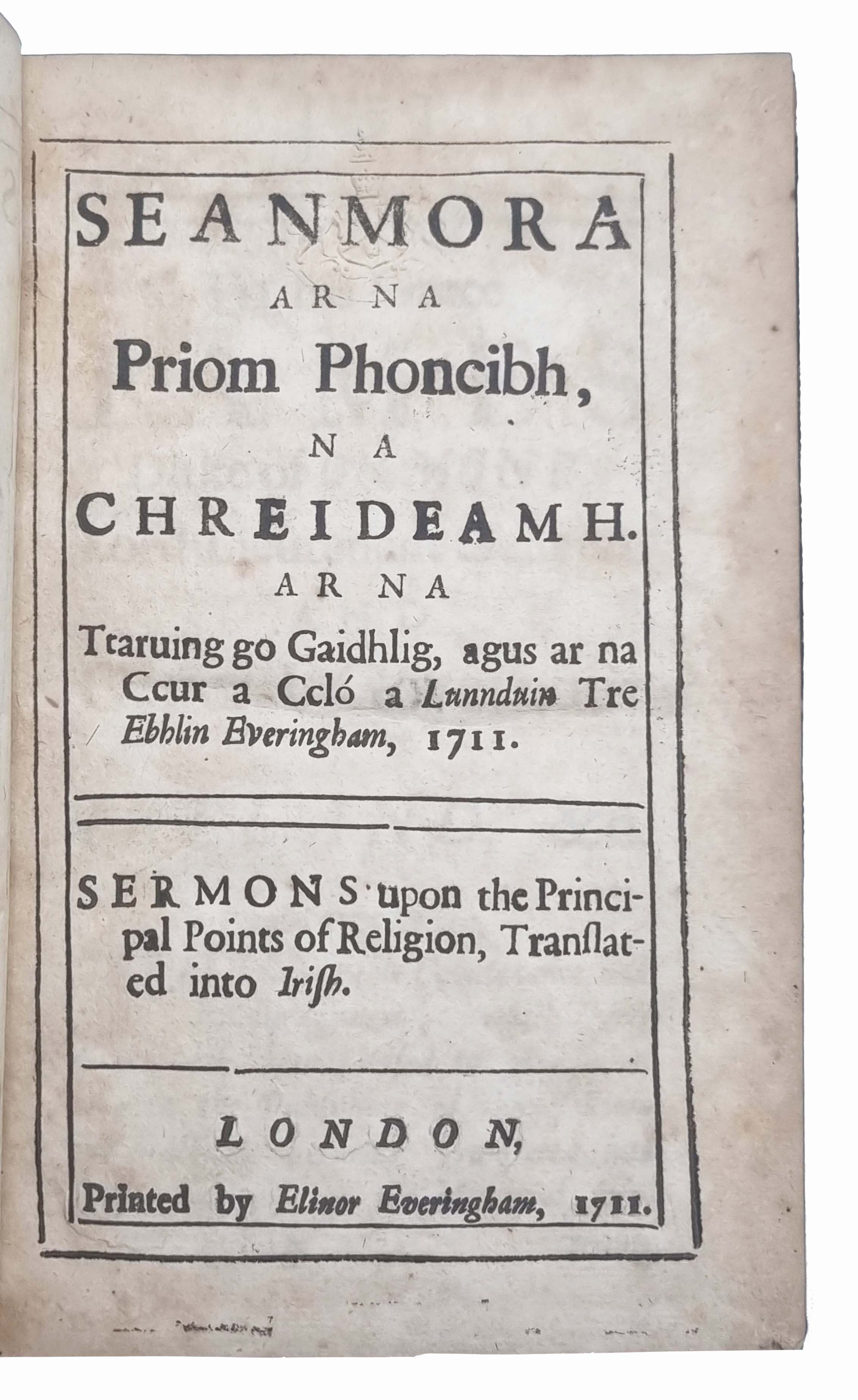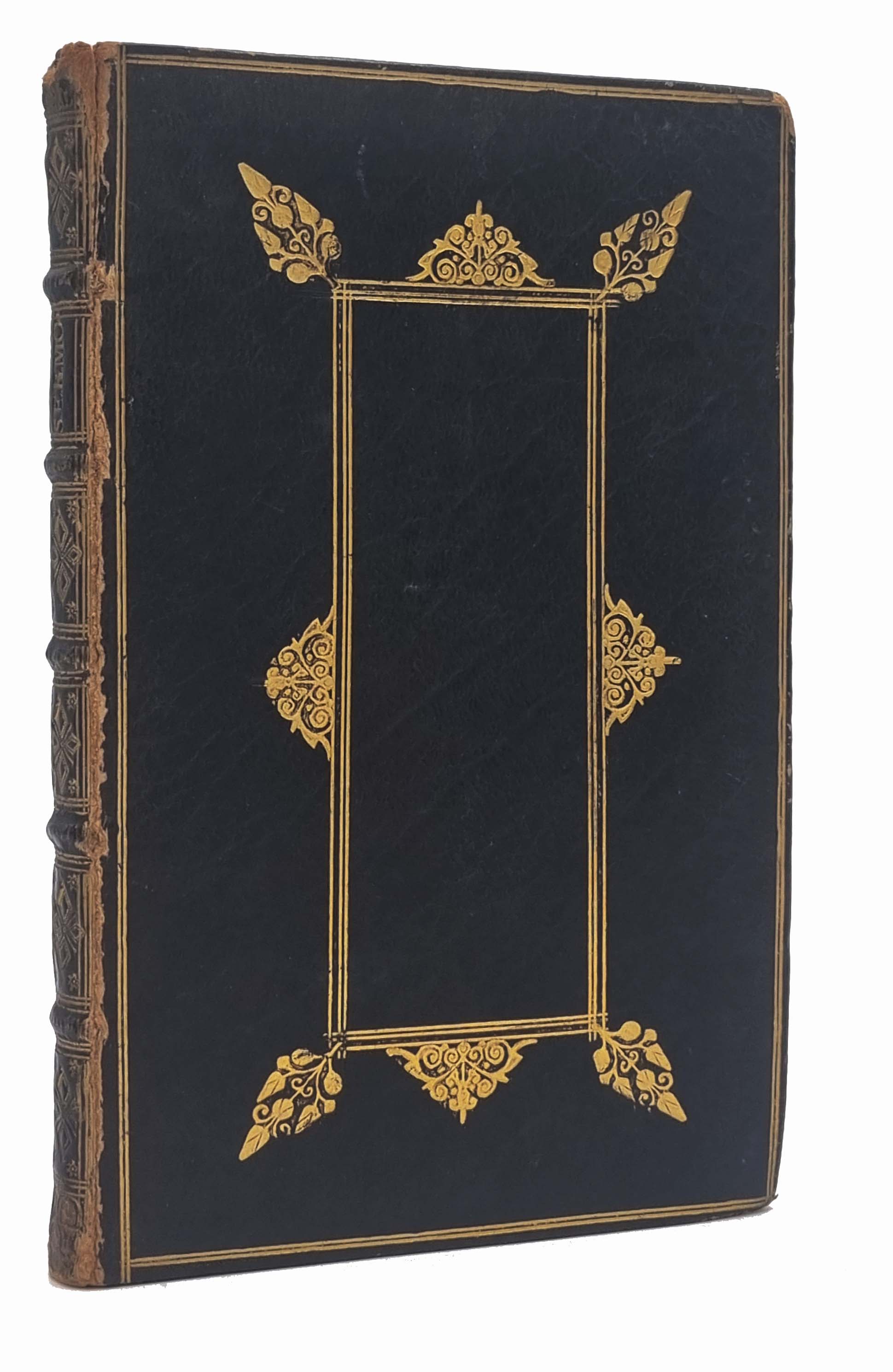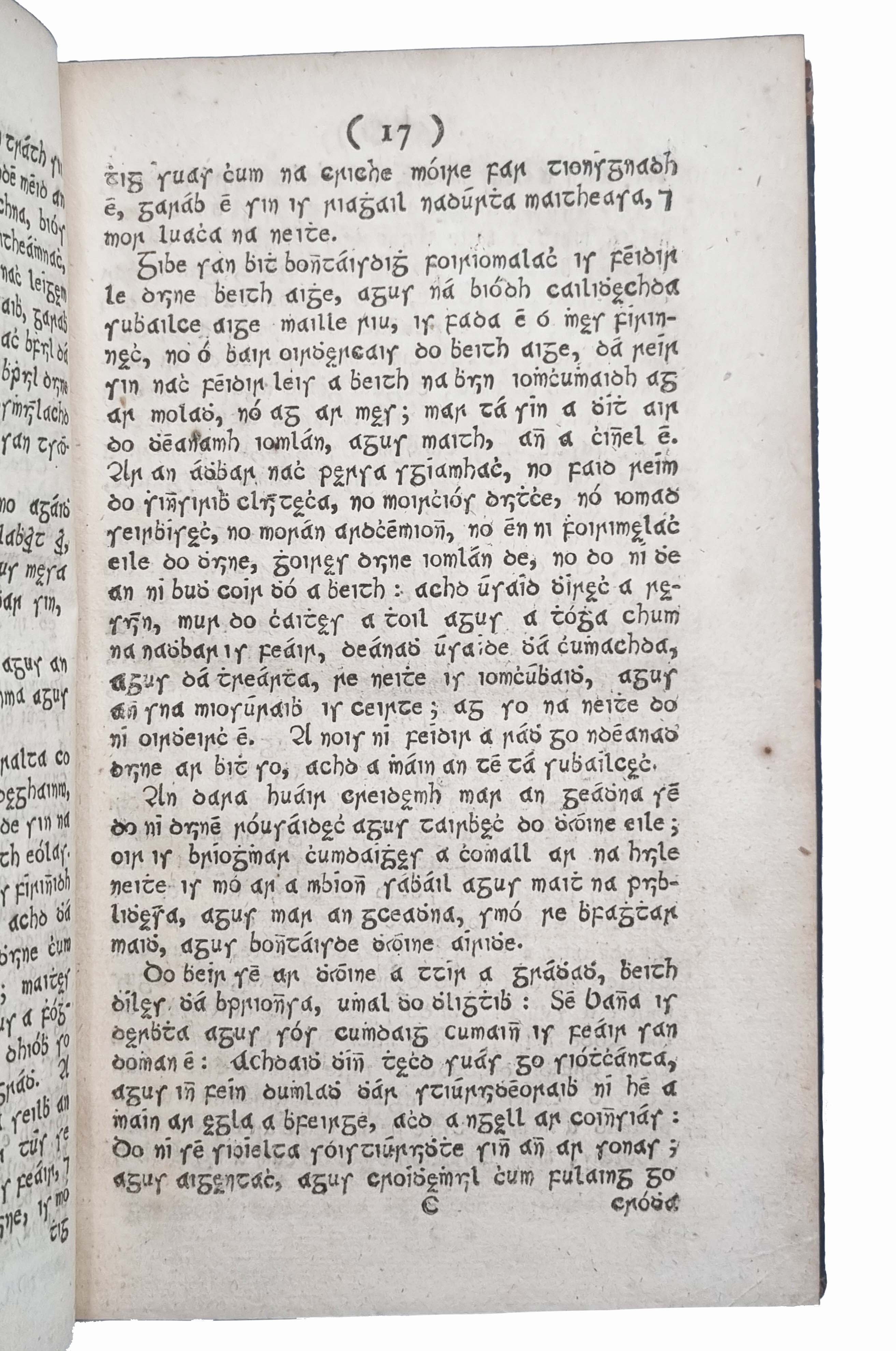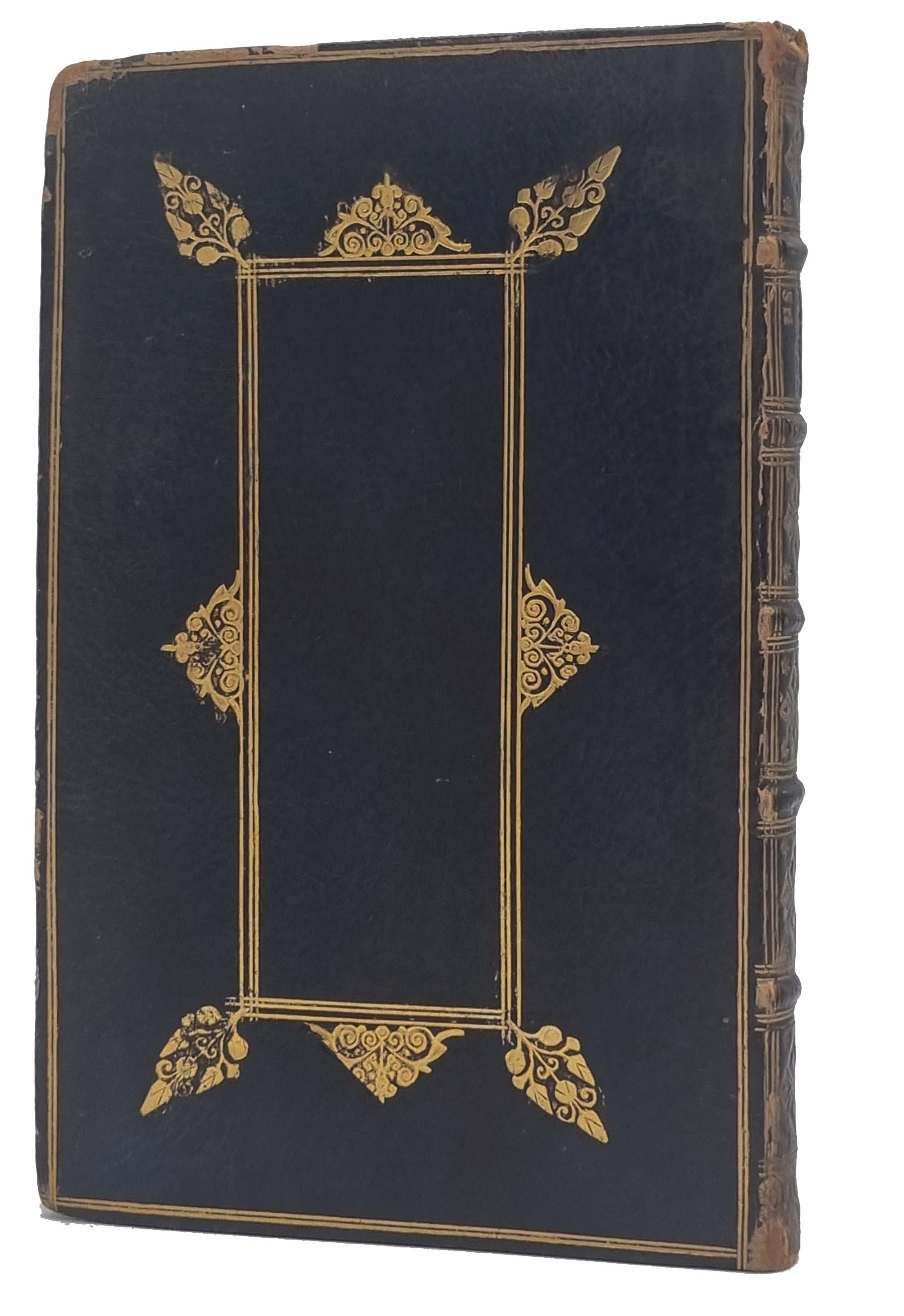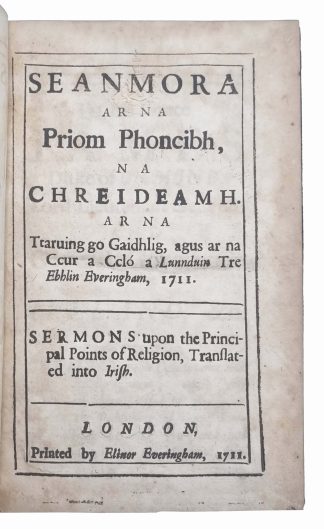EARLY GAELIC PRINTING BY FEMALE PRINTER
Seanmora ar na priom phoncibh, na chreideamh.
London, printed by Elinor Everingham, 1711£7,500.00
FIRST EDITION. 8vo, pp. [8], 155, [5], last blank. Gaelic letter (Moxon), little Roman. Last few gatherings toned, a few rust marks. An excellent copy in contemporary English (London) black morocco, double and triple gilt ruled to a panel design, gilt-stamped fleurons to corners and sides, spine in compartments, gilt and gilt-lettered, marbled eps, a.e.g., extremities a trifle rubbed. Armorial bookplate of Earls of Macclesfield’s South Library (1860) to front pastedown, ms shelfmark to fly, South Library dry-stamp to title and another leaf, interesting use of printer’s waste for l6 and l8 (blank), with traces of blurred printing and trace of fallen type.
A handsomely bound, very good copy of the first edition of this collection of five English Protestant sermons translated into Irish. It was produced by the London printer Elinor Everingham, who took over her husband Robert’s press. In 1680, Robert was the first to use use Moxon’s Irish type. The author of the first three, John Richardson (1664-1747), dean of Kilmacduagh, was an Anglican pastor of the Church of Ireland, especially known for his strong advocacy of the use of the Irish language for preaching, with a view to converting Irish Catholics. In the dedication, he laments how ‘that unfortunate Island hath been miserably Afflicted since the Reformation, […] in a great measure owing to the unhappy differences of Religion’. Most of his publications are concerned with the conversion of Irish Catholics and the teaching of Irish, including a short basic grammar. The other sermons are by John Tillotson (1630-94), Archbishop of Canterbury, and William Beveridge (1637-1708).
These sermons touched on key principles of the Anglican religion, explained with clarity and aiming to provide a general, less abstract idea of English Protestantism, addressed to the educated middle classes, who would also have appreciated such a charming binding. The off-setting in the preliminaries, which were added at the last moment, and the use of printer’s waste in two ll. of the last gathering, suggests that the copy was bound in the Everingham’s workshop as a high-quality ‘trade binding’. The work was dedicated to the Duke of Ormond, Lord Lieutenant General and Governor of Ireland, to whom, as said in the dedication, Richardson had presented a petition in 1710 to request that a number of religious books, including the scriptures and, as here, ‘select sermons upon the principal points of religion’, ‘be translated and printed in the Irish character and tongue, in order to which the only set of Irish characters now in Britain is bought already, and that those books be distributed in the Irish families that can read, but especially given to such ministers as shall endeavour to convert them, and to give them a true and practical sense of religion’ (‘Brief Sketch’, p.8). An attractive copy.
Only HRC copy recorded in the US. Not at Bodleian. ESTC T47236; Best, Bibliography of Irish philology and of printed Irish literature, p.249. D. McGuinne, Irish type design (2010); Brief Sketch of Various Attempts which Have Been Made to Diffuse a Knowledge of the Holy Scriptures Through the Medium of the Irish Language (1818).

